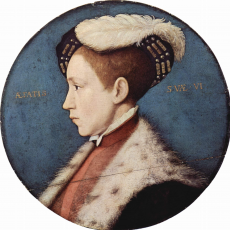
Email: EllaTournes@bexleygs.co.uk
Total Article : 45
About Me:Sixth form student currently studying English Literature, Drama and Theatre Studies, Classical Civilisation and History.

The question of how significant the changes made under Edward VI were can surely be seen through public opinion. There was very limited opposition or resistance to the religious change introduced by the state – this suggests that maybe there was a more gradualist feel to the changes, as not to cause too much controversy.
There were, however, notable exceptions. The Western Rebellion of 1549 ‘a determined protest against Somerset’s policies – especially, but not exclusively religious’ (Haigh) and was caused by the introduction of the new Prayer Book. The first insurrections of the rebels against the Reformation came about out of fear of loss of church goods, and the unpopularity of William Body. They suspected that Body, who was an agent of the government, was trying to earn himself money by confiscating church goods. Rebels had grown accustomed to services in Latin, and demanded an end to religious changes – they also protested on the behalf of the monasteries. The rebels attempted to capture the town of Exeter, but were destroyed by Somerset.
A revisionist view of the public support for Protestantism is discussed by Duffy. He states that ‘the Reformation had not been achieved on a tidal wave of popular enthusiasm, but instead had to be worked for, by force, persuasion and slow institutional transformation’. This, again, refers to Duffy’s opinion on the pace of the Reformation (the rejection of the ‘tidal wave’ idea suggests gradualism), but also refers to the public opinion on the Reformation. Duffy argues that the general public were not enthusiastic about Protestantism, and that the Reformation required ‘force’. He gives this as a reason for the slow pace of the Reformation. He refers to ‘institutional transformation’, which refers to the government. Haigh, however, refers to Protestants themselves as the reason for change of public opinion. He states that, ‘It was the Protestants who really made the running in 1548, forcing the pace of change by their books, sermons and agitation’. Obviously the two historians cite different people for the change of public opinion, but the language they choose is interesting. Duffy refers to the public as being ‘force(d)’, whereas Haigh refers to them as being ‘agitat(ed)’. The words bear connotations of different paces and strengths – however, these paces don’t fit the traditional revisionist/orthodox ideas of the respective historians, with Haigh suggesting a mounting ‘agitation’ and Duffy a more active ‘force’.
When put into context with the rest of the Tudor dynasty, resistance to the religious regime enforced under Edward seems light. For example, public reaction to Henry VIII’s Break with Rome was a lot more dramatic than anything Edward VI encountered, leading to events such as the Pilgrimage of Grace. The reaction to Mary I’s religious action from the public was also a lot stronger – they were aggravated by her marriage to Philip of Spain for religious reasons, and reacted very badly to the burnings at the stake as the result of strict heresy laws. Elizabeth I was plagued with less dramatic revolts – her biggest worries concerning religion were Catholic Plots, made by individuals, not the general public. This could arguably be due to the fact that public opinion, had, by that time, lent itself to Protestantism due to the changes made during Edward’s reign.
Source: https://en.wikipedia.org/wiki/Edward_VI_of_England#/media/File:Edward_VI,_aged_6.jpg
Source:

0 Comment:
Be the first one to comment on this article.